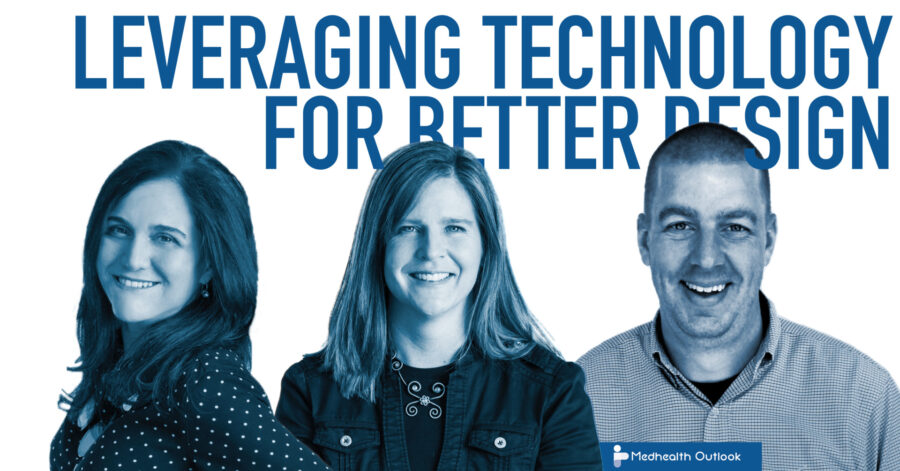Insights
Mar 7, 2023 _ insights
Augmented Reality & Computer Simulation: Leveraging Technology for Better Design
Medhealth Outlook, a publication that reports on the latest technology in healthcare, recently invited us to share how we’re using emerging technologies to improve healthcare design.
The result was two articles that describe how we have used Computer Simulation and Augmented Reality to improve communication, testing, and decisions around our design work.
“How Simulation Can Overcome Bias and Objectively Test Design Performance” describes how we’ve used a simulation modeling software (FlexSim) to test the performance of our design ideas. Briefly put, simulation modeling enables us to map the detailed steps of medical processes that take place within a space—including patient and staff paths, the duration of procedures, and resources used (spaces and equipment)—to build an independent model that can show how the space operates under different levels of demand. It’s helpful in showing how and when backups occur, and can help disentangle the symptoms of delays from their causes.
Read more about our experience with simulation modeling here.
“Multidimensional Design: Implementing Augmented Reality” describes how we’re using Augmented Reality (AR) to create immersive, full-scale models of our designs. The value of this is that it provides an efficient way of enabling clients to intuitively understand the design by experiencing it as a full-scale space. AR overcomes many of the hang-ups and limitations of traditional ways in which we communicate about designs (for example, through floorplans, sections, and renderings). Our experience has shown that the feedback we get improves with the use of this technology, allowing us to make important improvements to a design before it’s built.
Read the full article here.
To learn more about Augmented Reality, read our insight, “Not Just for Pokémon GO Anymore: How Augmented Reality is Transforming Architecture.”
For more on simulation modeling, read here or here.
 Troy Malmstrom is an associate principal at GBBN and is the firm’s Director of Computational Design & Fabrication. He believes that if we understand how building components and materials are fabricated, we can create more elegant design solutions, so he works with designers, manufacturers, fabricators, and builders to understand all the processes that feed into our projects and discover openings for creatively executing our design intent.
Troy Malmstrom is an associate principal at GBBN and is the firm’s Director of Computational Design & Fabrication. He believes that if we understand how building components and materials are fabricated, we can create more elegant design solutions, so he works with designers, manufacturers, fabricators, and builders to understand all the processes that feed into our projects and discover openings for creatively executing our design intent.
 Angela Mazzi, FAIA, FACHA, EDAC is a principal and medical planner in GBBN’s healthcare market. Harnessing studies on human psychology, research on our biological need for nature, and experience with Lean strategies, Angela creates exceptional environments that help patients heal and empower professionals to deliver exemplary care.
Angela Mazzi, FAIA, FACHA, EDAC is a principal and medical planner in GBBN’s healthcare market. Harnessing studies on human psychology, research on our biological need for nature, and experience with Lean strategies, Angela creates exceptional environments that help patients heal and empower professionals to deliver exemplary care.
 Stephanie Shroyer is an associate principal at GBBN. As an interior designer and medical planner, she uses design to envelop people in environments that positively impact their sense of well-being. Stephanie combines research, evidence-based design, and cues from nature to craft healthcare facilities that help the healing process and make the work of the healer more efficient.
Stephanie Shroyer is an associate principal at GBBN. As an interior designer and medical planner, she uses design to envelop people in environments that positively impact their sense of well-being. Stephanie combines research, evidence-based design, and cues from nature to craft healthcare facilities that help the healing process and make the work of the healer more efficient.




